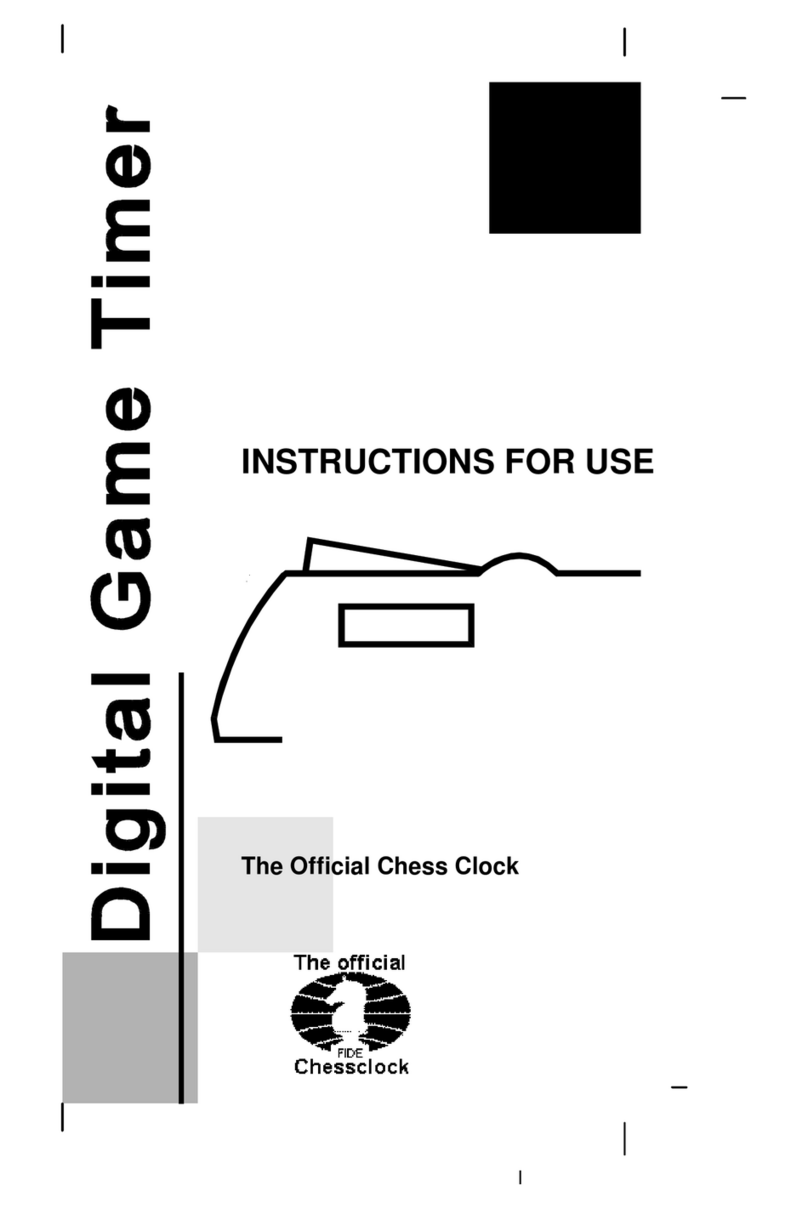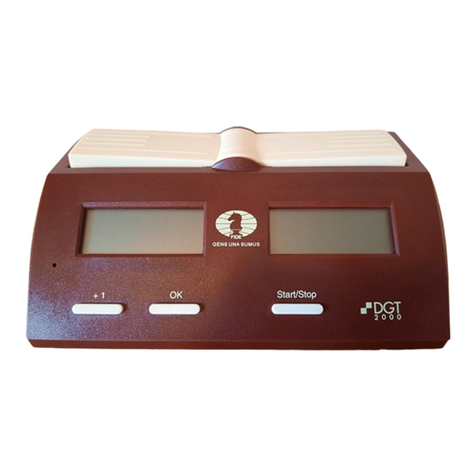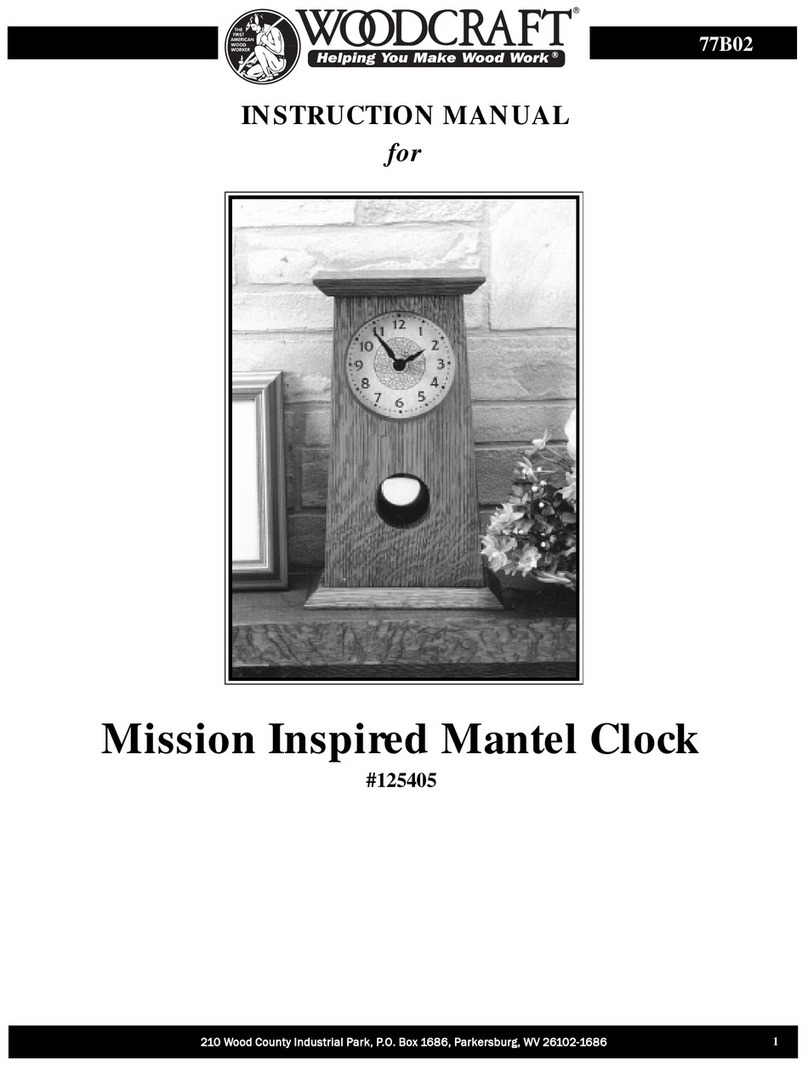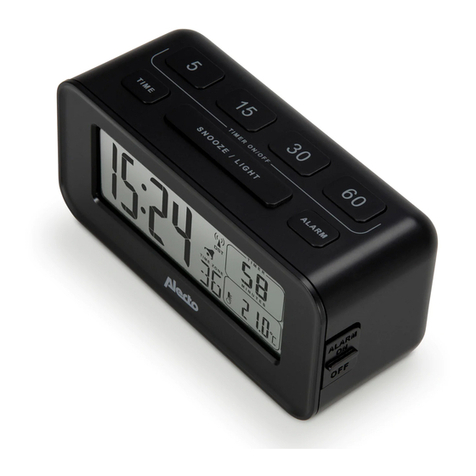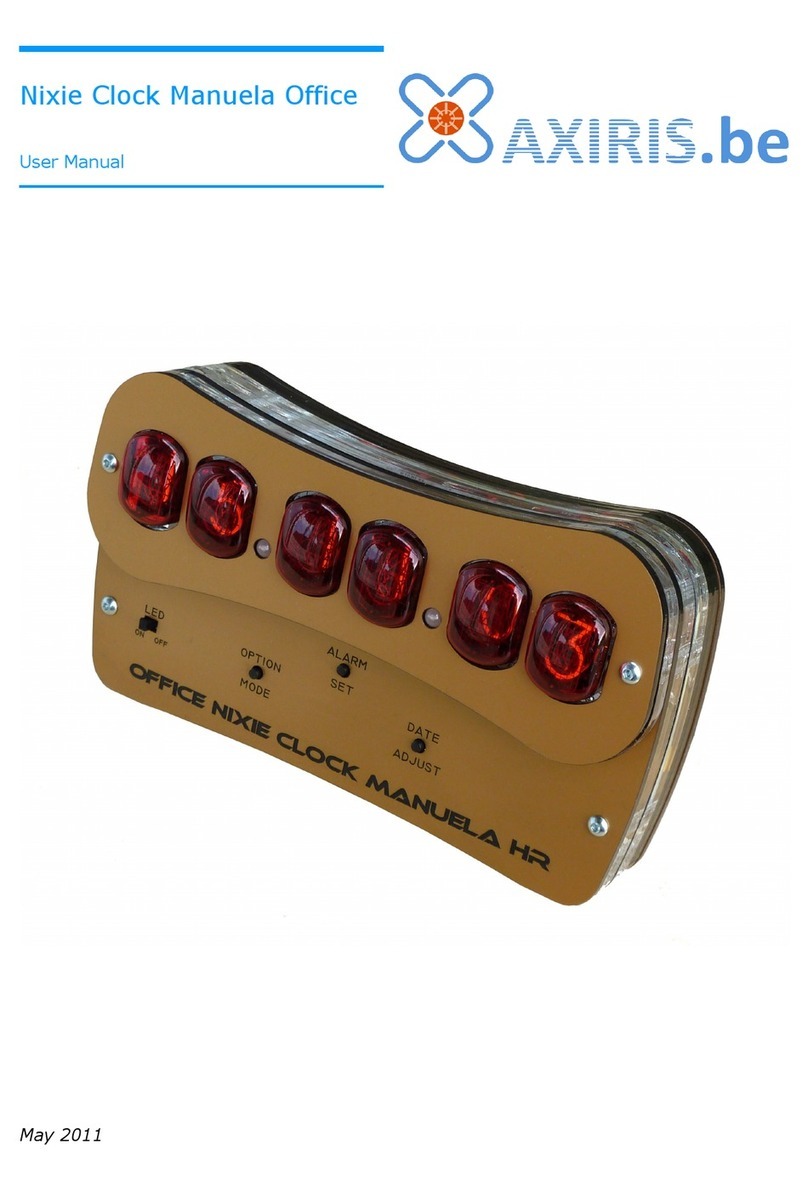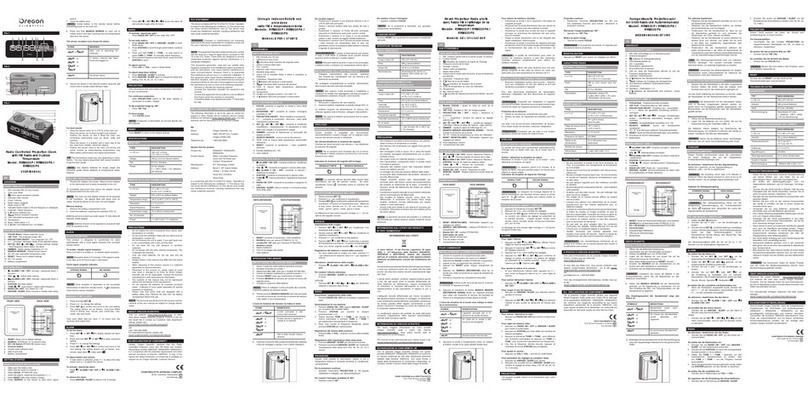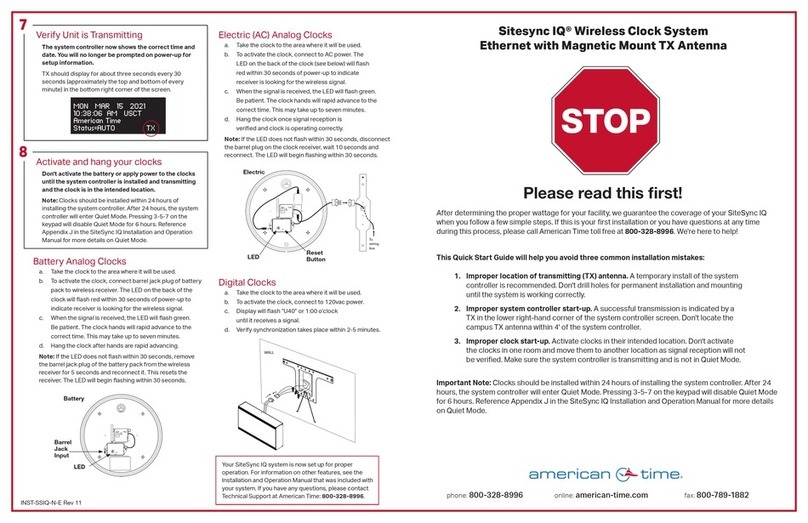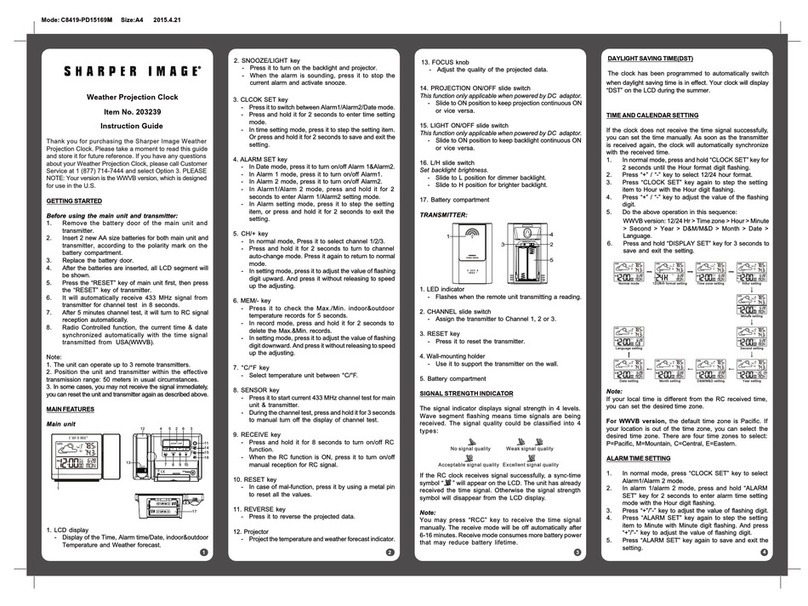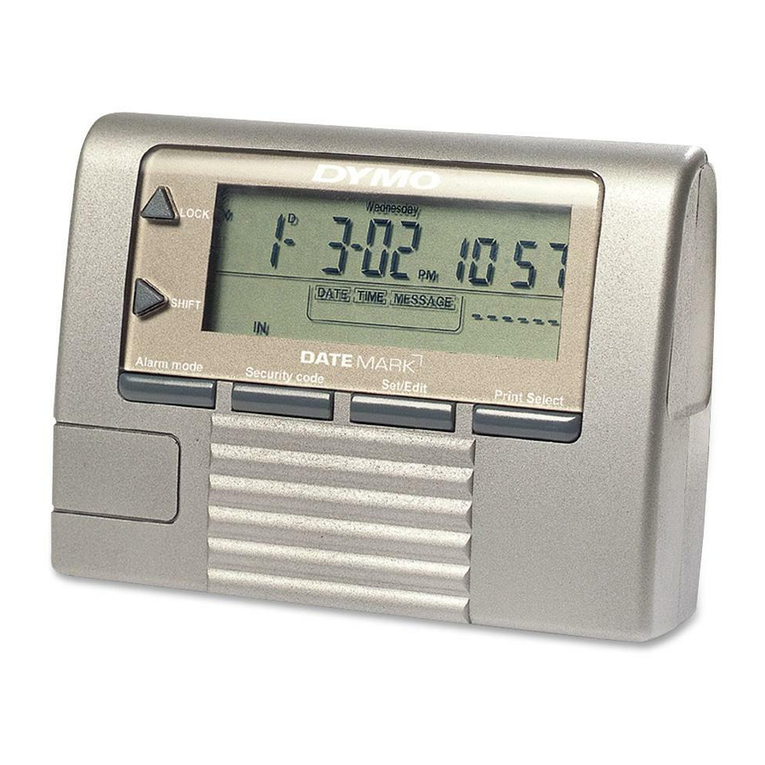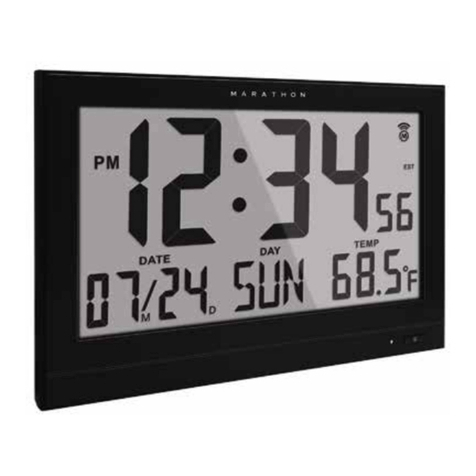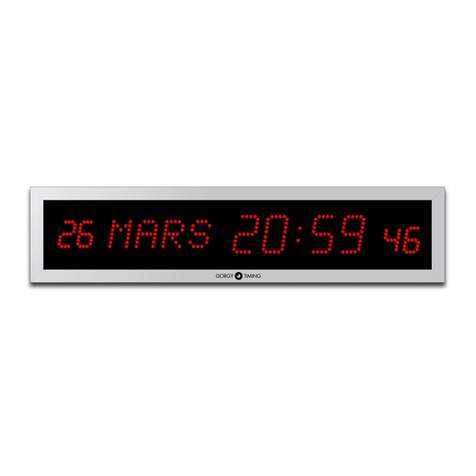DGT Projects XL User manual

Fig. 1
Fig. 2
AB
A
F
G
C
C
D
D
E
®
D I G I T A L E X C E L L E N C E
Copyright©2003 DGT Projects BV Enschede, The Netherlands
Table of contens
Introduction: Timing Methods ...........................................2
1. TIME (Options 1 to 5)..............................................2
2. 1 PERIOD + Guillotine (Options 6 and 7)......................2
3. 2 PERIODS + Guillotine (Option 8) ..............................2
4. 3 PERIODS + Guillotine (Option 9) ..............................2
5. ‘Fischer’-Blitz, Rapid and Slow (Options 10, 11 and 12)..2
6. ‘Fischer’-Tournament (Option 13).............................2
7. ‘Bronstein’-Blitz, Rapid and Slow (Options 14, 15 and 16)2
8. 2 PERIODS + ‘Fischer’ (Options 17 and 18)....................2
9. ‘GO’ using the Canadian Byo-yomi method (Options 19 and 20)
.........................................................................3
10. Scrabble®+ Upcount (Option 21)................................3
11. Hourglass (Option 22) .............................................3
Operation ....................................................................3
1. Batteries .............................................................3
2. Switching on the DGT XL..........................................3
3. Choosing an option number ......................................3
4. Activating an option number.....................................3
5. Buzzer ................................................................3
6. Starting a game.....................................................3
7. Color indication.....................................................3
8. Temporarily stopping the timer.................................3
9. Move counter........................................................3
10. Time corrections ...................................................3
11. Canadian Byo-yomi.................................................4
Manual settings: Option 00...............................................4
1. Activating a default setting......................................4
2. Manual settings .....................................................4
3. A simple example ..................................................4
4. A complex example................................................4
This DGT Projects product complies to the regulations for
electro magnetic compatibility EMC 89/336/EEC
WWW.DGTPROJECTS.COM
WWW.DIGITALEXCELLENCE.ORG
WWW.DGTXL.COM
Back
Storage - 1
Sound Run/Pause +1
Moves OK
Adjust
ON
Reset or
new game:
switchoff
and on
OFF

2
User Manual
Introduction: Timing Methods
Time is an exciting aspect of many sports. This is certainly true in
games such as chess, go, draughts, shogi and Scrabble®. A players'
skill is determined not only by decisions, but by how quickly those
decisions are made. The more a sport is seen as a contest, the more
important it becomes to reduce the time a player has to perform an
action. This should be realized in a way that is closest in line with the
typical features of the contest and the sport that is practiced.
The DGT XL offers 11 different standard methods for timing two-player
games. The thinking times that are most commonly used are pre-
programmed in the DGT Clock as options 1 to 22, but it is also possible
to combine different methods by manually setting your own personal
preferences (use option 00).
Whilst several methods are well known, others may be less familiar to
you. Several of these methods have been in use for a long time; others
are the result of the possibilities now offered by modern electronics.
Every method has its own charm and has an influence on the manner
in which a sport is experienced.
The traditional "quickie" of 5 minutes per person is different from 3
minutes using ‘Bronstein’ or ‘Fischer’ in which every move attracts an
extra 3 seconds of thinking time, although the total thinking time for a
game is hardly any different.
We recommend players to experiment with the various methods which
the DGT XL offers. It can add an extra dimension to your favorite
sport.
1. TIME (Options 1 to 5)
This is the simplest way to allocate time. Each player is given one period
in which they must make all moves.
2. 1 PERIOD + Guillotine (Options 6 and 7)
The first period is used to play a predetermined number of moves. The
second period, the Guillotine, is used to finish the game. 1 Period +
Guillotine can be used as an alternative to the traditional ‘’Rapid and
Blitz’’ with a quiet start.
3. 2 PERIODS + Guillotine (Option 8)
For a less frantic game, it is possible to play a game with two periods
before the Guillotine.
4. 3 PERIODS + Guillotine (Option 9)
A quiet end to a game also has its advantages. The simple traditional
clock gives the players repeated one-hour periods in which to
complete a predetermined number of moves.
For more than 50 years, it was standard in chess to play a serious
game in two periods separated by a break. This had two
disadvantages:
Games could not always be decided after two periods.
From 1990 onwards, the increasing strength of chess computers and
endgame databases added what some considered an unfair advantage
in the ability to analyze adjourned games.
Various proposals were made for ways to finish games in one session,
without having to resort to the Guillotine method, as this method may
influence the final result of the game in a way that can be
unsatisfactory to the players.
The ‘Bronstein’ delay’ and ‘Fischer’ methods provided a solution by
giving players a predetermined amount of extra thinking time after
making each move.
After the introduction of the Digital Game Timer in 1994 the application
of the above-mentioned methods has been a major topic in discussions
in the chess world. The results of these discussions have been translated
successfully into the new DGT XL.
5. ‘Fischer’-Blitz, Rapid and Slow (Options 10, 11 and 12)
This method applies from the first move, allowing a player to gain
extra time apart from the standard period, as every completed move
attracts extra time. By completing moves in a time that is shorter than
the extra time per move, a player can build up the thinking time
available for subsequent moves.
Note: The DGT XL remembers, through the operation of the lever
at the start of a game, which player is playing white. The icons
and in the display (Fig. 2 F) clearly show which player is to
move. This has consequences for the moment when a player
exceeds the available thinking time for the first time. If black is
the first to exceed the allotted time for the first period then
white receives a double bonus. The correct operation of the lever
is also important in the ‘Fischer’ and ‘Fischer Tournament’
options.
6. ‘Fischer’-Tournament (Option 13)
The ‘Fischer’-Tournament method is the most complex in the way
thinking time is regulated. In addition to the extra time available per
move, the player is also allotted an extra amount of principal thinking
time after a predetermined number of moves has been completed.
For this option a move counter is available. This counts the
number of completed moves (that is: the sum total of the moves
played by both white and black). The allocation of new principal
thinking time occurs only at the appropriate moment if the DGT
XL is carefully operated.
7. ‘Bronstein’-Blitz, Rapid and Slow (Options 14, 15 and 16)
The oldest proposal from the chess world for a solution to the problem
of limited thinking time came from IGM David Bronstein.
His method applies from the first move. The principal thinking time is
reduced by delay. Before the principal thinking time is reduced the
player has a fixed amount of time to complete a move. It is not
possible to increase the thinking time by playing more quickly as it is
in the ‘FIDE’ and ‘Fischer’ methods.
8. 2 PERIODS + ‘Fischer’ (Options 17 and 18)
This method also applies from the first move. Starting the game in a
traditional way, the player has to complete a predetermined number
of moves within a fixed period of time. By playing the last period using
‘Fischer’, situations where time trouble influences the result of the
game too much can be avoided.
Always ensure that the lever is in the correct position before a
game begins.

3
9. ‘GO’ using the Canadian Byo-yomi method (Options 19 and
20)
This method is derived from the original Japanese Byo-yomi method of
the game ‘GO’. When playing with traditional clocks was the method
that was most commonly used, an official who would be in control of the
time using a stopwatch would always accompany the players.
The player gets an extra 5 or 10 minutes of extra thinking time to
complete a predetermined number of moves, usually 10 or 15, after the
standard thinking time has been used up. See the chapter on
‘Operation’, paragraph 8.
10. Scrabble®+ Upcount (Option 21)
In Scrabble, games have to be finished, even if a player exceeds the
available thinking time. The more time a player uses after exceeding the
available thinking time, the bigger the number of points that will be
subtracted.
You can use Upcount as an independent method by choosing
manual settings (option 00). This way, the display will show 0
seconds when starting the game.
11. Hourglass (Option 22)
The thinking time for the player to move decreases, while
simultaneously the opponent’s thinking time increases.
This method offers an exciting alternative to the traditional ‘quickie’.
Operation
1. Batteries
The DGT XL requires 2 AA (penlight) batteries. We recommend alkaline
batteries.
To insert the batteries, remove the cover from the battery
compartment on the bottom of the timer by clicking on it.
NOTE: If you do not plan to use your timer for a long period, we
recommend that you remove its batteries.
If ‘BAT’ (Fig. 2G) appears on the timer display, the batteries are
nearly discharged and should be replaced as soon as possible. When
this message first appears, the batteries still contain enough energy to
allow the current game to be completed.
2. Switching on the DGT XL
Switch the time on and off with the ON/OFF switch on the bottom of
the DGT XL. If you want to reset the clock after a game you will have
to switch off the clock first using the ON/OFF switch.
3. Choosing an option number
When you switch on the timer, the display shows the option number
that was last selected. Press the (+1) or (–1) buttons in order to
change the number on the timer’s display (Fig. 1).
4. Activating an option number
When the selected option number appears in the display, press (OK)
to activate this number. The starting time will now appear in the
display.
For details on manual settings (option 00), see the Manual
Settings section.
5. Buzzer
The DGT XL has an automatic sound signal, which indicates that a
player approaches and exceeds the time limit. Switch the buzzer on or
off by pressing and holding the sound button firmly for three
seconds. The symbol in the display (Fig. 2 E) shows the sound signal
is switched on.
6. Starting a game
After activating the option number, press the Run/Pause button to
start the timer. Ensure the lever is in the correct position before the
game begins. This is especially important when playing ‘Fischer’ or
‘Bronstein’, as the clock will ‘know’ who is to play white and who is to
play black by recognizing the initial position of the lever. The display
will show which side has started the game playing white.
7. Color indication
Central in the display of the DGT XL the icons and indicate which
player is playing which color (Fig. 2 F). To set this default, ensure the
lever is in the correct position before starting the timer. White is always
the side where the lever is lifted at the start of a game. The automatic
move counter will respond to this position.
When playing ‘Fischer’ in multiple periods where transitions to the next
period are dependent on a predetermined number of moves, it is
extremely important to set the correct color indication, as otherwise the
automatic adding of extra time per move will fail during transitions.
8. Temporarily stopping the timer
During the course of a game, you can temporarily stop the timer by
pressing the Run/Pause button.
Restart the timer by pressing the Run/Pause button again.
9. Move counter
During the course of a game, you can check the number of completed
moves by pressing the (Moves) button. The display will show the
number of moves played so far. During the check, the timer will
continue normally.
10. Time corrections
During a game you can change the time that is currently displayed by
pressing the Pause button and subsequently holding the Adjust
button for three seconds until the left digit flashes.
To change the flashing digit (the number of hours of the left player),
press or . As each desired digit appears in the display, press .
This causes the next digit to flash.
The sequence of digits is as follows: Hours, tens of minutes, minutes,
and in the similar position in the display tens of seconds and seconds.
First change the left player’s time, then the right player’s time.
When you have changed and accepted both players’ times, the move
counter will appear in the display. You can change it as well by
pressing the or buttons. When changing the move counter of the
right player it is possible that the player color icons and will
change as well, as the logical result of the input of the number moves
and the position of the lever.
If more periods are programmed or active, the period number can now
be changed. The Fischer Tournament Program is completely derived
from the input of the number of moves.
When the digits have stopped flashing, you can start the timer by
pressing the Run/Pause button . The timer continues using the
changed times.

4
11. Canadian Byo-yomi
When the Byo-yomi method is active it is possible to reload the Byo-
yomi time for the player whose time is currently counting down by
pressing and holding the BACK button for one second. After this
Byo-yomi time has appeared in the display a player must indicate their
turn is over.
Manual settings: Option 00
Option 00 offers the maximal freedom to set the DGT XL according to
your personal preferences. It is possible to choose from the different
timing methods, as well as to set your own preferred default settings,
or just to combine different systems. The maximum number of
personal default settings is 5; they can all be saved and recalled at a
time to your own choice.
When starting the DGT XL select option 00 using the or buttons
and press to activate it.
1. Activating a default setting
To activate a default setting hold the Store button for a few
seconds while the option digit is flashing. (Load) will appear in the
left display. Then select one of the five default settings (1 .. 5, Fig. 2
B) by using the or buttons. Finally, press to confirm your
choice. By pressing the Run/Pause button briefly this default
setting is activated. By pressing the Run/Pause button again, the
timer will be activated for the start of a new game.
2. Manual settings
In a manual setting you can create up to five consecutive periods,
setting a standard method (Time, Fischer, Bronstein Delay, Hourglass,
Upcount, Byo-yomi) for each period with desired values for both time
and number of moves.
A manual setting can be saved after input.
Choose Option 00.
On the left the number 1 will appear (Fig. 2 B) to indicate the first
period has to be set.
Select a timing method (Fig. 2 C) by proceeding to the desired method
using the or buttons buttons. Confirm by pressing .
Set the standard time for the player on the left in the left display. Use
the or buttons and confirm by pressing . It is possible to return
to the previous digit using the (BACK) button. Set after each other:
Hours, tens of minutes, single minutes, tens of seconds, seconds.
Continue to the right display and repeat the procedure for the player on
the right.
When using ‘Fischer’ or ‘Bronstein’ Delay, subsequently set the extra
time per move or the delay time per move in minutes and seconds.
When using ‘Fischer’, you will also have to set the number of moves
for the first period afterwards.
When using ‘Fischer’ the following is of particular importance: When
using ‘Fischer’, it is possible to choose when to start the next period.
If you set the number of predetermined moves as 00, the next period
will start as soon as the first player has run out of time. However, if
you set a number between 01 and 99, the next period will start as
soon as the player has individually completed this number of moves.
If you just want to set one period, then proceed to END by pressing
or buttons and confirm by pressing .
If you want to set multiple periods, then first choose the timing
method you want to use for each period and then complete the
procedure per period as indicated above. After you have set the last
period, finish by pressing END.
Note: Not all sequences of methods are allowed to be set. If
logically a sequence of settings is impossible, it is impossible to
select these settings. If, for example, the second period has been
specified as Upcount, it is impossible to set a third period after
Upcount.
If you want to save the set time, hold the STORE button for a few
seconds. (Program) will now appear in the left display. Continue
choosing the number (1 to 5) (Fig. 2 B) of the default setting using
or buttons and confirm by pressing .You can start the game by
pressing Run/Pause .
Below you will find two examples of setting a program. On our
Internet site, www.dgtprojects.com, you will find more examples.
3. A simple example
Suppose you want to play a game with 15 minutes for the player on
the left and 30 minutes for the (slightly weaker) player on the right.
Suppose you want to save this as default setting number 3.
•Select option number 00
•Confirm by pressing
•Select TIME
•Confirm by pressing
•Set as follows: 0, , 1, , 5, , 0, , 0, , 0, , 3, , 0,
, 0, , 0,
•Select END
•Confirm by pressing
•Hold the button for a few seconds
•Select default setting number 3
•Confirm by pressing
4. A complex example
Suppose you want to play in 3 periods. 40 moves in 1 hour and 30
minutes, followed by 20 moves in 30 minutes, and finish playing
‘’Fischer’’ with an extra 20 seconds attracted per move. Suppose you
save it as default setting number 5.
•Select option number 00
•Confirm by pressing
•Select TIME
•Confirm by pressing
•Set as follows: 1, , 3, , 0, , 0, , 0, , 1, , 3, 0, ,
0, , 0,
•This completes period 1
•Again select TIME
•Confirm by pressing
•Set as follows: 0, , 3, , 0, , 0, , 0,
•This completes period 2
•Select ‘FISCH’
•Set as follows: 0, , 1, , 0, , 0, ,0, , (= 10 minutes
standard time) 0, , 2, , 0, (=20 seconds extra per move)
0, , 0, (=number of moves 0, for a final period using
‘Fischer’ set 0 as the number of moves, for multiple periods set
the number of moves per period)
•Select END
•Confirm by pressing
•Hold the button for a few seconds
•Select default setting number 5
•Confirm by pressing .
Other DGT Projects Clock manuals
